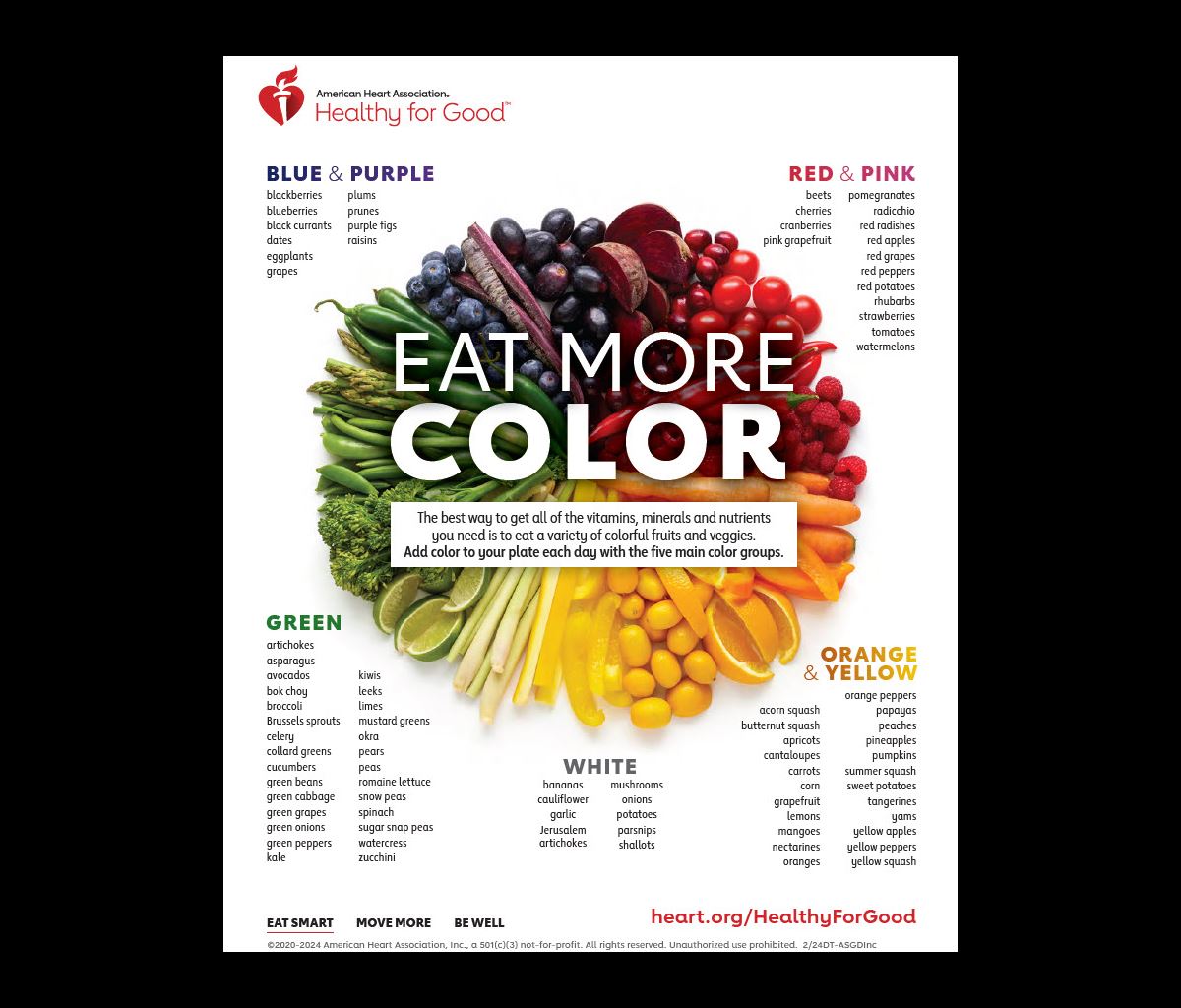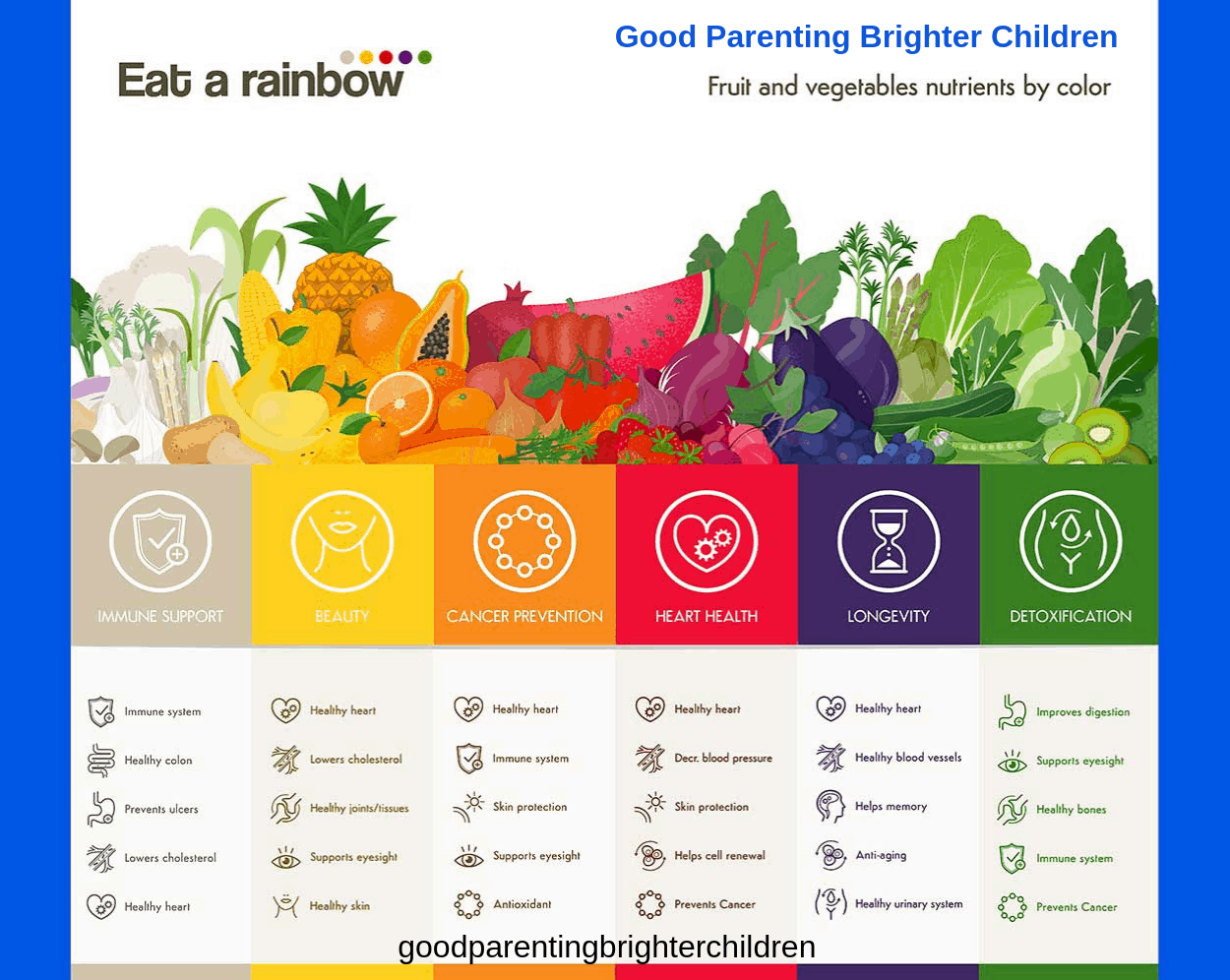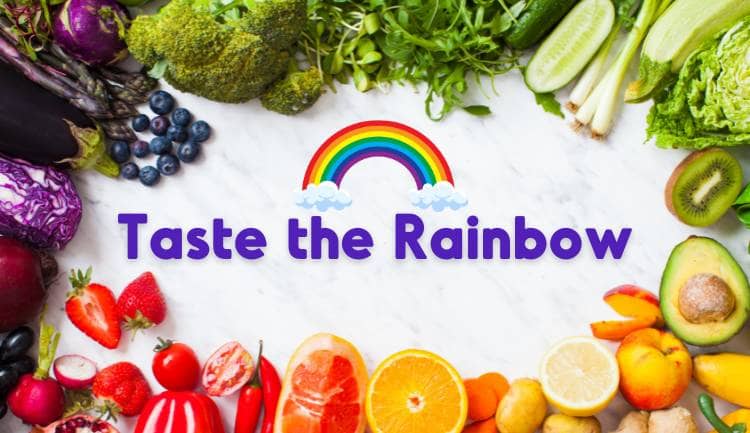Let’s Paint Our Plates with Every Color of the Rainbow! 🌈
Imagine turning your meals into a colorful adventure where every bite not only bursts with flavor but also sprinkles a bit of health magic into your day! Picture this: every color on your plate, from the reddest apple to the greenest leaf, is like a secret ingredient, packed with super cool things called phytonutrients that help keep us super healthy and buzzing with energy! 🚴♂️💪
So, why not make it a fun goal to add at least five different colors from fruits and veggies to our plates every day? 🎯 But wait, why is eating all these colorful foods so awesome for us? 🤔

The answer lies in the content of different phytonutrients. These are non-other than the pigments responsible for the color of different fruits and veggies. But the best part is that each of these phytonutrients has a pivotal role in promoting our health by working as powerful antioxidants, as well as having distinct nutritional benefits. Let’s have a look at the main phytonutrients and their main properties, divided by color.

Note: I am not a doctor and you should see your doctor if you are looking to treat existing ailments. I found this information across the next at the most reliable sources. References below.
Red Plant Food Phytonutrients
Red plant foods may contain any of the following phytonutrients:
- Betacyanins
- prevents premature aging
- cancer preventing antioxidant
- Capsaicin
- aid in weight loss
- reduce inflammation
- reduce pain
- Ellagic Acid
- Cancer prevention
- anti-inflammatory
- obesity prevention
- Lycopene
- protects against oxidative stress that prevents chronic diseases, cancer, diabetes, and more
- may protect against cancers of the prostate, lungs, breasts, and kidneys
- may improve cholesterol levels, preventing heart disease
- helps prevent damage caused by UV rays
- Nitrate
- improve athletic performance
- regulate blood pressure
- breathing and circulation
Yellow / Orange Plant Food Phytonutrients
Yellow and orange plant foods may contain any of the following phytonutrients:
- Beta Carotene
- Immune System
- Vision
- Skin Health
- Bone Health
- Beta Cryptoxanthin
- converted to Vitamin A in the body
- skin and bone health
- immunity
- reduce the risk of arthritis
- Betaxanthins
- prevents premature aging
- cancer preventing antioxidant
- Bromelain
- anti-inflammatory and analgesic treatment for Osteoarthritis
- prevents or treats (in high amounts, like a supplement) asthma, Chronic sinusitis, colitis, burns, and cancer
- Curcumin
- powerful anti-inflammatory and antioxidant
- increases the growth of new neurons and fights various degenerative processes in your brain
- lowers the risk of heart disease
- help prevent and perhaps even treat cancer
- prevention of Alzheimer’s disease
- reduce joint inflammation in those with arthritis
- antidepressant
- Flavones
- anti-inflammatory
- uplifting overall health
- Flavanones
- potent antioxidant and anti-inflammatory
- weight management
- cholesterol management
- promoting cardiovascular health
- soothe the nervous system
Green Plant Food Phytonutrients
Green plant foods may contain any of the following phytonutrients:
- Chlorophyll
- anti-aging
- treats hemoglobin deficiency disorders, such as anemia
- reduces body odors
- helps heal surgical wounds and prevent infections
- slows cancer growth
- Isoflavones
- hormonal balance
- lower the risk of breast, endometrial, and prostate cancers
- regulate the menstrual cycle
- Isothiocyanates
- prominent role in cancer prevention
- Lutein & Zeaxanthin
- improve or reduce the progression of many eye conditions
- antioxidants in the skin that prevent sun damage, help to improve skin tone, and to slow down aging
- Myrosinase (an enzyme that activates Sulforaphane, which has these benefits)
- prevent cancer cell growth
- supports heart health
- regulate blood sugar levels, preventing diabetes
- helps with digestion
- improved symptoms of autism-like social interaction and verbal communication
- potential to improve recovery and reduce mental decline after a brain injury
- protect against ultraviolet (UV) skin damage caused by the sun
- Phytocannabinoids (also found in CBD)
- treatment and prevention of malignant brain tumors
- treatment and prevention of Parkinson’s disease (PD)
- treatment and prevention of Alzheimer’s disease (AD)
- treatment and prevention of multiple sclerosis (MS)
- treatment and prevention of neuropathic pain
- treatment and prevention of childhood seizure disorders
Blue / Purple Plant Food Phytonutrients
Blue and purple plant foods may contain any of the following phytonutrients:
- Anthocyanidins
- prevents heart disease by improving cholesterol levels and blood sugar metabolism
- prevents breast cancer
- Procyanidins
- protect the body from sun damage
- improve vision
- improve flexibility in joints, arteries, and body tissues such as the heart
- improve blood circulation by strengthening capillaries, arteries, and veins
- Resveratrol
- lower blood pressure by increasing the production of nitric oxide
- lengthened lifespan in animal studies
- protects brain cells from damage
- helps develop better insulin sensitivity
- relieve joint pain
- inhibit cancer cell growth
Black Plant Food Phytonutrients
Black plant foods may contain any of the following phytonutrients:
- Phytocannabinoids (also found in CBD)treatment and prevention of malignant brain tumors
- treatment and prevention of Parkinson’s disease (PD)
- treatment and prevention of Alzheimer’s disease (AD)
- therapy and prevention of multiple sclerosis (MS)
- treatment and prevention of neuropathic pain
- treatment and prevention of childhood seizure disorders
- Saponins
- promote cardiovascular health
- normalize blood sugar, which could help with weight management
- boosts immune system
- reduces the risk of cancer
- Tannins
- first, they help reduce inflammation and protects against cellular damage and certain chronic illnesses, such as heart disease and cancer
- various types of tannins prevent disease and provide antioxidant and anti-inflammatory benefits
- antibacterial effects may stop the growth of Staphylococcus bacteria, Candida albicans, and Campylobacter jejuni
- slow the progression of neurodegenerative disorders like Parkinson’s disease and Alzheimer’s
- balance blood sugar levels
Brown Plant Food Phytonutrients
Brown plant foods may contain any of the following phytonutrients:
- Beta Glucans
- boosts heart health
- regulates blood sugar
- stimulates immune system
- Lignans
- lowered risk of heart disease
- reduces menopausal symptoms
- lowered risk of osteoporosis
- decreased risk of breast cancer
- Resistant Starch
- feeds the friendly bacteria in your intestine
- increases the production of short-chain fatty acids like butyrate, which feeds the cells of your colon and leads to various improvements in the function of your digestive system
- improves insulin sensitivity and lowers blood sugar levels
- increase feelings of fullness and help people eat less
- Theobromine
- protects your heart
- increases energy, similar to caffeine
- short-term boost in brain function
- strengthens tooth enamel, promoting healthy teeth
- increases airflow to the lungs, potential cough suppressant
- potent anti-inflammatory
- Other Fibers
White Plant Food Phytonutrient
On the other hand, white plant foods may contain any of the following phytonutrients:
- Allicin
- lower cholesterol levels
- regulate blood pressure
- alleviate exercise-related muscle damage
- Flavanols
- lower blood pressure by improving nitric oxide levels and blood vessel function
- supports neuron production, and brain function and improves blood flow and supply to brain tissue
- maintain healthy blood sugar levels
- has promising anti-cancer properties
- Phenolic Acids
- promote the anti-inflammation capacity of human beings
Do you see why it is so important to eat the rainbow? If you are just starting to incorporate more color into your diet, check out the color-sorted grocery list I have in my article, Plant-based Grocery List.
Unlocking More Yummy Secrets: Dive Deeper into the World of Phytonutrients! 🚀🌱
Keeping the Good Stuff in Our Food 🍓🥦
Did you know that how we store and use our colorful fruits and veggies can keep them super-powered for longer? 🤯 Scientists tell us that storing and eating our produce in certain ways can keep all the good stuff (like phytonutrients) in them for longer! So, maybe we can share some cool tips on how to keep our food fresh and super healthy in our next meal plan guide!
Detox Time with Colors!
Ever heard of detox? It’s like giving our bodies a little holiday from all the hard work it does! A cool study showed that phytonutrients (yup, the good stuff in our colorful foods) can help our bodies take a chill pill and get rid of any unwanted stuff. So, adding a rainbow to our plates might just be the vacation our bodies deserve!
Boosting Brain Power with a Splash of Color! 🧠
Guess what? The colors on our plate can also make us brainy! 🤓 Research shows that phytonutrients can give our brains a little boost, helping us think faster and remember things better! So, from red apples to purple grapes, every bite might just be making us the next geniuses!
Tiny Greens, Big Benefits! 🌱💚
Let’s talk about microgreens – tiny little plants with a HUGE punch of nutrients! 🥊 Not only are they super healthy, but they can also be grown in cool, space-saving ways like vertical farming. Adding a sprinkle of these tiny wonders to our meals can be a fun and easy way to level up our nutrient game!
Let’s Keep it Green and Clean! 🌎💙
Speaking of tiny greens, how we grow our food is super important too! Vertical farming is not only super smart but also kind to our planet, making sure we have yummy, nutrient-packed foods in a cool, earth-friendly way!
Wrapping Up: Let’s Celebrate the Colors! 🎉🌈
So, as we munch through the rainbow, remember: each color is not just a treat for our taste buds but a little gift of health, helping us feel awesome inside and out! Let’s celebrate these colors, enjoy every bite, and dance through a life of yummy, healthy eating! 🎊🕺💃
Make sure to check out my Vegetarian Rainbow Charcuterie for a fun way to get the full rainbow of color! The kids love this!

References
- Color of Food.pdf (wholisticmatters.com)
- Betalains Facts and Health Benefits | Nutrition (healthbenefitstimes.com)
- Capsaicin Supplements: Benefits, Dosage, and Side Effects (healthline.com)
- What is Ellagic Acid and What Foods Contain it? (healthline.com)
- Lycopene: Health Benefits and Top Food Sources (healthline.com)
- Nitric Oxide & Dietary Nitrate: Another Reason to Eat Your Vegetables – Center for Nutrition Studies
- What Are Phytonutrients? – Have A Plant (fruitsandveggies.org)
- Beta-Cryptoxanthin in Produce May Cut Arthritis Risk (verywellhealth.com)
- Bromelain: Dosage, Benefits, and Side Effects (healthline.com)
- 10 Proven Health Benefits of Turmeric and Curcumin (healthline.com)
- Everything You Need to Know About Flavonoids (healthline.com)
- Flavonoids: Types, Functions, Health Benefits And Food Sources (netmeds.com)
- Proven benefits of chlorophyll and how to consume more (medicalnewstoday.com)
- Lutein and Zeaxanthin: Benefits, Dosage and Food Sources (healthline.com)
- Sulforaphane: Benefits, Side Effects, and Food Sources (healthline.com)
- Review of the neurological benefits of phytocannabinoids (nih.gov)
- Anthocyanins Benefits and Food Sources (verywellhealth.com)
- Proanthocyanidins: A comprehensive review – ScienceDirect
- 7 Health Benefits of Resveratrol Supplements (healthline.com)
- What Are the Health Benefits of Saponins? (sfgate.com)
- Tannins In Tea: Everything You Need To Know, According To Science (mindbodygreen.com)
- What Are Tea Tannins? Benefits and Downsides (healthline.com)
- Beta Glucan: The Heart Healthy Fiber (healthline.com)
- Naturally Lignan-Rich Foods: A Dietary Tool for Health Promotion? (nih.gov)
- Resistant Starch 101 — Everything You Need to Know (healthline.com)
- 8 Potential Health Benefits of the Theobromine Found in Chocolate – TCHO Chocolate
- Allicin: Benefits, Side Effects, Dosage, and Interactions (verywellhealth.com)
- 11 Health and Nutrition Benefits of Cocoa Powder (healthline.com)
- Phenolic acids: Natural versatile molecules with promising therapeutic applications (nih.gov)
- Educating on Best Practices for Keeping Nutrients
- Detoxification Program and Antioxidants
- Nutrients and Cognitive Performance
- Microgreen Production and Vertical Farming




